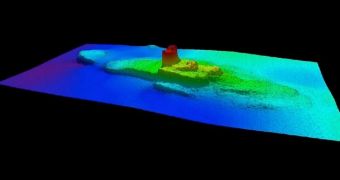Just yesterday, the National Oceanic and Atmospheric Administration in the United States, more commonly referred to as NOAA, went public with the news that the remains of a 1800's ship had been discovered close to the Golden Gate Bridge in San Francisco.
Information shared with the public says that the ship in question used to be known as the SS City of Chester. The vessel was built in 1875 and ended up at the bottom of the ocean just a few years later.
Thus, it was on August 22, 1888, that, as it was leaving San Francisco for Eureka, California, the SS City of Chester collided with another ship dubbed the Oceanic, which was arriving in San Francisco all the way from Asia.
In the aftermath of this collision, it only took the SS City of Chester about six minutes to sink. According to Live Science, as many as 16 of the people it was carrying aboard lost their lives in this incident.
For some time after the ship drifted to the bottom of the ocean, folks knew exactly where its wreck sat. In time, the SS City of Chester was forgotten, and the vessel only made it back in the spotlight in last year's May, when its remains were discovered by NOAA's Coast Survey team.
Information shared with the public says that the Coast Survey team stumbled upon this ship as it was carrying out a sonar survey of the region. Thus, it was with the help of sonar technology that specialists managed to locate the SS City of Chester and assess its condition.
The vessel's remains are located at the edge of a shoal. The wreck is pretty much entombed in mud, and its hull rises about 18 feet (roughly 5.5 meters) above the ocean floor. The sonar used by NOOA's Coast Survey team has even managed to pin down the gash that caused it to sink many decades ago.
For the time being, there are no plans to try and recover the SS City of Chester from the bottom of the ocean. However, NOAA says that it is considering creating an exhibition focusing on this vessel at the Gulf of Farallones National Marine Sanctuary, and that it also plans to make information about this ship available only by means of Google Oceans.
In a statement, James Delgado with NOAA stresses that the discovery of this wreck is proof that, when it comes to ocean exploration, both science and technology are very useful tools. “Not only are we boldly going and finding new life, we're finding evidence of past civilization,” he says.

 14 DAY TRIAL //
14 DAY TRIAL //